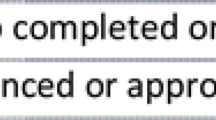“Indicators are a way of seeing the big picture by looking at a small piece of it.”
Jackson Community Council, quoted in Plan Canada 1999
Abstract
This paper gives a broad overview of issues relevant to the development and use of health-and-environment indicators in the broader context of sustainable development. Criteria for the construction of indicators are given, and their key characteristics are highlighted. Selected international indicator initiatives are discussed, as well as the concept and use of core indicators in policy and planning. Finally, an organizational framework for the consideration of health-environment-development linkages is presented, which can be used in the development of health-and-environment indicators in various contexts. This framework is the Driving forces-Pressures-State-Exposures-Health Effects-Actions framework (DPSEEA) of the World Health Organization (WHO). It is a descriptive representation of the way in which various driving forces generate pressures which affect the state of the environment, and ultimately human health through the various exposure pathways by which people come into contact with the environment. Throughout the paper, emphasis is placed on work done within the UN system, in particular that of the WHO, and examples of suites of indicators developed and in use are provided.
Résumé
L’article offre une vue d’ensemble des enjeux relatifs à l’élaboration et l’utilisation d’indicateurs de santé et d’environnement dans le contexte plus large du développement durable. L’auteur propose des critères pour la construction d’indicateurs et en souligne les principales caractéristiques. Il traite de certains projets d’indicateurs à l’échelle planétaire ainsi que de la conception et de l’utilisation d’indicateurs de base pour l’élaboration de politiques et la planification. De plus, il présente un cadre organisationnel qui tient compte des liens entre la santé, l’environnement et le développement et qui peut servir à la mise au point d’indicateurs de santé et d’environnement dans divers contextes. Ce cadre de l’Organisation mondiale de la Santé (OMS) s’intitule Forces motrices-Pressions-État-Exposition-Effets sur la santé-Actions (DPSEEA en anglais). Il constitue une representation descriptive de la manière dont les diverses forces motrices exercent des pressions qui touchent l’état de l’environnement puis la santé humaine, vu les diverses voies d’exposition par lesquelles les personnes entrent en contact avec l’environnement. L’auteur insiste sur le travail effectué dans le réseau de l’ONU, notamment dans celui de l’OMS, et fournit des exemples de groupes d’indicateurs mis au point et utilisés.
Similar content being viewed by others
References
Plan Canada. Sustainable community indicators programme. 1999;39(5).
United Nations. Agenda 21: Programme of Action for Sustainable Development. Rio Declaration on Environment and Development. Rio de Janeiro, Brazil, 1993.
Hammond A, Adriaanse A, Rodenburg E, Bryant D, Woodward R. Environmental indicators: A systematic approach to measuring and reporting on environmental policy performance in the context of sustainable development. Washington, DC: World Resources Institute, 1995.
Briggs D, Corvalan C, Nurminen M. Linkage methods for environment and health analysis. UNEP/US EPA/WHO. Geneva, Switzerland, 1996.
Peterson P. Indicators of sustainable development in industrialising countries. Lestari Monographs, Penerbit University Kebangsaan, Bangi, Malaysia, 1997.
Murray C, Lopez A. The global burden of disease: A comprehensive assessment of mortality and disability from diseases, injuries and risk factors in 1990 and projected to 2020. Harvard University Press, 1996.
OECD. OECD core set of indicators for environmental performance reviews. Environmental Monograph 83, OECD, Paris, France, 1993.
UNEP/RIVM. An overview of environmental indicators: State of the art and perspectives. UNEP/EATR.94-01; RIVM/402001001, 1994.
World Resources Institute. Environmental indicators: A systematic approach to measuring and reporting on environmental policy in the context of sustainable development. New York, NY: WRI, 1995.
World Bank. Monitoring environmental progress: A report of work in progress. Washington, DC: The World Bank, 1994.
SCOPE. Environmental indicators: A systematic approach to measuring and reporting on the environment in the context of sustainable development. Paper presented at the workshop on Indicators of Sustainable Development for Decision-making. Ghent, January 9–11, 1995.
United Nations. Indicators of sustainable development: Framework and methodologies. New York, NY: UN, 1996.
UNCHS. Monitoring human settlements: Abridged survey. Nairobi, Kenya, 1995.
World Bank. Social Indicators of Development. Baltimore and London: Johns Hopkins University Press, 1996.
WHO. Health-for-All in the 21st century. Geneva: WHO, 1998.
WHO. Indicators for Assessing Vitamin A Deficiency and Their Application in Monitoring and Evaluating Intervention Programmes. Geneva, Switzerland: WHO, 1996.
WHO. Health and environment analysis and indicators for decision-making. World Health Statistics Quarterly 1995;48(2).
von Schirnding Y. Health and environment in sustainable development planning: The role of indicators. Paper prepared for World Summit on Sustainable Development. Geneva: WHO, 2002.
WHO. Catalogue of Health Indicators: A Selection of Important Health Indicators Recommended by WHO Programmes. Geneva: WHO, 1996.
WHO. Evaluation of programmes to ensure food safety. Geneva: WHO, 1989.
United Nations. Progress Report on Basic Indicators for the Integrated and Coordinated Implementation of and Follow-up to Major UN Conferences and Summits at all Levels. E/2000/60 2000.
Commonwealth of Australia. State of the environment reporting: Framework for Australia. Department of the Environment, Sport and Territories, Commonwealth of Australia, Canberra ACT, 1994.
Harvard University. Environmental indicators. Report No TA 5542-Reg, Asian Development Bank/Govt of Norway, Environmental Systems Programme, 1996.
WHO. Health and Environment in Sustainable Development. Geneva: WHO, 1997.
WHO. Environmental Health Indicators: Framework and Methodologies. Geneva: WHO, 1999.
Author information
Authors and Affiliations
Corresponding author
Rights and permissions
About this article
Cite this article
von Schirnding, Y.E. Health-and-Environment Indicators in the Context of Sustainable Development. Can J Public Health 93 (Suppl 1), S9–S15 (2002). https://doi.org/10.1007/BF03405112
Published:
Issue Date:
DOI: https://doi.org/10.1007/BF03405112




